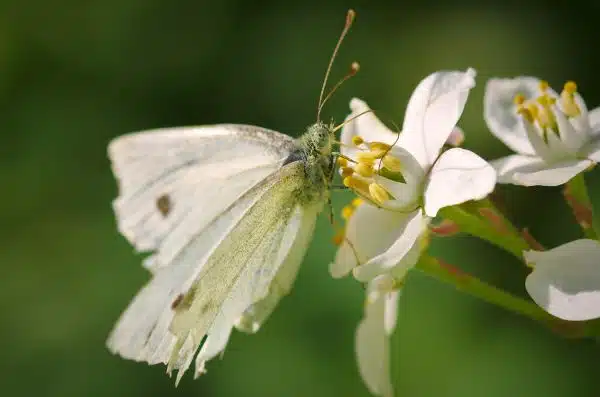Mexican Orange Plant, scientifically known as Choisya ternata, is a popular ornamental shrub among gardeners and landscapers. This evergreen plant is native to Mexico and the southwestern United States and is admired for its glossy green leaves, fragrant white flowers, and citrus scent. The Mexican Orange Plant can grow up to six feet tall and wide, making it an excellent choice for hedges or borders.
Growing and caring for Mexican Orange Plant requires some knowledge about its preferred growing conditions and maintenance practices. This article aims to provide comprehensive information on how to cultivate and maintain this beautiful shrub in your garden. From soil preparation to pruning techniques, we will cover everything you need to know to ensure your Mexican Orange Plant thrives and adds value to your outdoor space. Whether you are a seasoned gardener or just starting out, this guide will equip you with the knowledge needed to grow a healthy Mexican Orange Plant that will impress all who see it.
Understanding The Mexican Orange Plant
Ah, the Mexican Orange Plant. Despite its name, this plant is not actually from Mexico. It hails from Japan and China, but it got its name due to its similarity in appearance to the orange fruit. The scientific name for this plant is Choisya ternata, and it belongs to the Rutaceae family.
The Mexican Orange Plant is a small evergreen shrub that can grow up to 8 feet tall and wide when matured. Its leaves are glossy green and emit a citrus scent when rubbed or crushed. The plant produces small clusters of white flowers with a sweet fragrance that bloom in late spring and early summer, followed by fragrant fruits that resemble small oranges in late summer and fall.
To grow the Mexican Orange Plant successfully, you must understand its growing conditions. This plant thrives best in well-draining soil with a neutral pH level. It prefers full sun exposure but can tolerate partial shade during hot summer months. The Mexican Orange Plant is also drought-tolerant once established but benefits from regular watering during prolonged dry spells. Overall, this plant is relatively low-maintenance and makes for an excellent addition to any garden or landscape design.
When choosing the right location for your Mexican Orange Plant, consider its growing conditions carefully. The plant prefers well-drained soil so avoid planting it in areas prone to waterlogging or flooding. Ensure that the soil has good drainage capability by loosening it with compost or sand if necessary. Additionally, make sure that the location offers ample sunlight exposure without being too exposed to harsh winds or extreme temperatures. With these considerations in mind, your Mexican Orange Plant will thrive beautifully!
Choosing The Right Location
The Mexican orange plant is a great addition to any garden due to its attractive appearance and low maintenance requirements. However, to ensure the plant thrives and produces beautiful flowers, it is important to choose the right location for planting. The first factor to consider when choosing a location is sun exposure.
Mexican orange plants require plenty of sunlight to grow properly. Therefore, it is essential to select a spot that receives at least six hours of direct sunlight each day. This means avoiding shaded areas or planting near trees or tall shrubs that can block out the sun’s rays. Additionally, it is best to plant Mexican orange plants in areas that get morning sun as this helps them dry off quickly after morning dew or rainfall.
Another crucial factor to take into account when selecting a location for the Mexican orange plant is soil type. These plants prefer well-drained soil that is rich in nutrients and organic matter. Avoid planting them in heavy clay soils as they tend to retain water and cause root rot. Instead, opt for sandy loam soils that drain well and allow air movement around the roots.
Now that you know what factors are necessary when selecting a site for your Mexican orange plant, it’s time to prepare the soil for planting. By ensuring optimal soil conditions, you can help your Mexican orange plant thrive and produce stunning blooms year after year.
Preparing The Soil For Planting
Before planting your Mexican orange plant, it is crucial to prepare the soil correctly. The first step is to determine the pH level of the soil. Mexican orange plants thrive in soils with a slightly acidic pH level ranging from 6.0 to 7.0. If your soil’s pH level is outside this range, amending it may be necessary.
To amend the soil, add organic matter such as compost or well-rotted manure into the top six inches of soil. This will improve soil structure, increase nutrient absorption and water retention capacity, and provide a source of food for beneficial microorganisms that live in the soil. Be sure to work this organic matter thoroughly into the ground using a gardening fork or tiller.
Once you have amended your soil and achieved an optimal pH range, you are ready to plant your Mexican orange plant. Remember not to over-fertilize or overwater your plant, as this can be detrimental to its health. Instead, follow proper care guidelines to ensure optimal growth and blooming of your beautiful Mexican orange plant.
Transition sentence: Now that we have prepared our soil correctly for planting our Mexican orange plant let us proceed to learn how to do so effectively.
Planting Your Mexican Orange Plant
Mexican orange (Choisya ternata) is a hardy, evergreen shrub with fragrant white flowers that blooms in spring and summer. To ensure success when planting your Mexican orange, it is important to choose a plant that is healthy and has a good root system. Once the plant has been chosen, it should be planted in an area that receives plenty of sunlight and is well-draining. When planting, it is important to ensure that the root ball is not too deep in the soil, and to water the plant thoroughly after planting.
Choosing A Plant
When selecting a Mexican Orange Plant, it is important to consider the plant’s aesthetic appeal and its ability to thrive in your specific climate. Mexican Orange Plants are evergreen shrubs that can grow up to 10 feet tall and wide. They produce fragrant orange blossoms that attract pollinators, making them an excellent addition to any garden.
Before choosing a Mexican Orange Plant, be sure to evaluate the amount of sunlight and moisture in your garden. These plants prefer full sun or partial shade, as well as well-draining soil. In addition, they are sensitive to frost and should not be planted in areas with harsh winters.
When selecting a Mexican Orange Plant, take into account the plant’s size at maturity and how it will fit into your existing landscape design. These shrubs make great focal points or can be used as hedging or screening plants. Consider pairing them with other evergreen plants for year-round interest in your garden. With proper care and attention, a Mexican Orange Plant will provide beauty and fragrance for years to come.
Planting The Plant
Now that you have chosen your Mexican Orange Plant, it is time to consider how to plant it. One of the first things to consider is the best season for planting. These shrubs are best planted in the spring or fall when temperatures are mild and rainfall is more consistent. This will give the plant a chance to establish its roots before facing extreme heat or cold.
If you are planting your Mexican Orange Plant in a container, be sure to choose a pot that provides adequate drainage and is large enough for the plant’s root system. Fill the container with a high-quality potting mix that promotes good drainage and nutrient uptake. When planting, be sure not to bury the trunk of the plant too deeply, as this can cause damage.
When planting directly into the ground, dig a hole that is twice as wide and deep as the root ball of your Mexican Orange Plant. Amend the soil with compost or other organic matter to improve drainage and fertility. After placing your plant in the hole, backfill with soil and water thoroughly. It is important to keep your new shrub well-watered during its first growing season while it establishes its root system. With proper care and attention, your Mexican Orange Plant will thrive and provide beauty and fragrance for years to come.
Watering And Fertilizing
Mexican orange plants require regular watering and fertilizing for optimum health and growth. When watering, it is important to ensure that the soil is moist but not waterlogged. Overwatering can lead to root rot, which can be fatal for the plant. Mexican orange plants prefer well-draining soils that allow excess water to drain away quickly. Water quality is also important as these plants are sensitive to salts and minerals found in hard tap water.
Using organic fertilizers is recommended for Mexican orange plants, as they provide a slow-release source of nutrients that promote healthy growth without causing damage to the plant or surrounding environment. Organic fertilizers such as compost or worm castings can be applied every 4-6 weeks during the growing season. It is important not to over-fertilize, as this can cause excessive foliage growth at the expense of flower production.
When applying fertilizer or watering, it is important to avoid getting water or fertilizer on the leaves of Mexican orange plants as this can cause leaf burn. A good practice is to apply water and fertilizer directly to the soil around the base of the plant using a drip irrigation system or a watering can with a spout. This helps prevent leaf burn while ensuring that the roots receive adequate moisture and nutrients.
To further assist with maintaining moisture levels in Mexican orange plants, mulching can be used as an effective technique for retaining moisture in the soil around the plant’s root system. Mulching involves adding a layer of organic material such as bark chips or straw around the base of the plant. This helps retain moisture in the soil by reducing evaporation rates and also provides additional nutrients for healthy growth.
Mulching For Moisture Retention
Using mulch can be an effective way to retain moisture in the soil and promote healthy growth of your Mexican orange plant. Mulching involves placing a layer of organic material, such as wood chips, straw, or leaves, over the soil around the base of the plant. This layer helps to conserve water by reducing evaporation from the soil surface and also acts as a barrier against weeds that can compete with your plant for nutrients.
Choosing the right type of mulch is important for ensuring optimal growth conditions for your Mexican orange plant. Organic mulches are often preferred because they decompose over time and add nutrients to the soil. However, avoid using mulches that are too fine or compacted as these can inhibit air and water flow to the roots. A depth of 2-4 inches is ideal for most plants, but be careful not to pile the mulch up against the stem or trunk as this can lead to rotting.
By using mulch, you can help your Mexican orange plant thrive in its environment by providing it with sufficient moisture and nutrients. As you care for your plant throughout its life cycle, consider incorporating this technique into your routine maintenance practices for optimal results. In addition to using mulch, pruning for shape and health is another key aspect of caring for your Mexican orange plant that will be discussed in detail in the subsequent section.
Pruning For Shape And Health
Mexican orange plants need to be pruned regularly in order to maintain their shape and health. Pruning frequency should take into account the age and size of the plant. An effective pruning technique involves removing dead or diseased branches, as well as cutting back healthy branches to encourage new, stronger growth. Pruning can also be used to create a desired shape and reduce the overall size of the plant. Benefits of pruning Mexican orange plants include increased air flow to the inner parts of the plant and improved light penetration, which in turn can promote more vigorous growth. Proper pruning can also reduce the risk of pests and diseases.
Pruning Frequency
Pruning is an essential component of maintaining the shape and health of your Mexican orange plant. It involves removing dead or diseased branches, shaping the plant to encourage growth, and promoting air circulation. Pruning should be done regularly to keep your plant looking healthy and vibrant.
The benefits of pruning are numerous. By removing dead or diseased branches, you reduce the risk of disease spreading to other parts of the plant. Pruning also encourages new growth, which can lead to a fuller, more attractive plant. Additionally, pruning can help control the size of your Mexican orange plant, making it easier to maintain in smaller spaces.
When it comes to pruning tools for your Mexican orange plant, there are a few options available. Pruning shears are ideal for small branches while loppers can handle larger ones. A pruning saw may be necessary for thicker branches. It is important to ensure that your tools are sharp and clean before use to prevent damaging the plant.
In conclusion, regular pruning is critical for maintaining the shape and health of your Mexican orange plant. The benefits include reducing disease risks, encouraging new growth, and controlling size. When selecting tools for pruning, consider using pruning shears, loppers or a pruning saw depending on branch thickness. Remember to keep your tools sharp and clean before use for best results.
Pruning Techniques
As a horticulturalist, it is essential to understand the different pruning techniques to maintain the shape and health of your Mexican orange plant. Knowing when to prune and how often is crucial in promoting healthy growth and improving the plant’s overall appearance.
When to prune your Mexican orange plant depends on its growth rate and blooming period. Generally, it is best to prune in late winter or early spring before new growth starts. However, if your plant blooms in early spring, wait until after flowering to avoid cutting off any buds that would produce flowers.
Pruning frequency is another important aspect of maintaining your Mexican orange plant’s shape and health. It is recommended to prune annually for young plants or every two years for established ones. Regular pruning helps keep the plant’s size manageable and promotes new growth while removing dead or diseased branches. By being mindful of when to prune and how often, you can ensure that your Mexican orange plant remains healthy and vibrant for years to come.
Pruning Benefits
Pruning is a fundamental technique that every horticulturalist should master to maintain the shape and health of plants. It involves cutting off unwanted branches, stems, or foliage to improve the plant’s appearance, stimulate growth, and prevent diseases. Pruning benefits are numerous and can vary depending on the type of plant, but in general, it helps maintain a plant’s structure while encouraging healthy new growth.
One of the significant benefits of pruning is that it enhances a plant’s aesthetic value. By removing overgrown or damaged branches and foliage, you can shape your Mexican orange plant into a more attractive form that complements its surroundings. Additionally, pruning stimulates new growth that can lead to more flowers or fruit production. It also reduces the risk of pests and diseases by removing dead or diseased parts of the plant.
Techniques in pruning play an essential role in ensuring the overall health of your Mexican orange plant. Proper pruning techniques allow for better nutrient distribution throughout the plant, allowing it to grow healthier with time. Regular pruning helps remove weakened or dead parts of the plant before they become harmful to the rest. As such, understanding when and how to prune your Mexican orange tree is crucial for maintaining its shape and promoting its health for years to come.
Dealing With Pests And Diseases
Pruning for Shape and Health is a crucial practice to maintain the Mexican Orange Plant’s health. It helps in removing dead or damaged branches, enhances air circulation, and encourages new growth. Pruning also keeps the plant’s shape and size under control by cutting back long branches. Proper pruning techniques must be followed to avoid damaging the plant. The best time to prune the Mexican orange plant is in late winter or early spring before it starts producing new growth.
Preventing infestations is an essential aspect of caring for Mexican orange plants. These plants are susceptible to pests like spider mites, scales, and mealybugs that can cause extensive damage if not controlled early enough. Regularly inspecting your plants for signs of pest infestation is necessary so that you can take appropriate measures. Using insecticides can help control pest infestations in the early stages.
Identifying plant diseases is necessary when it comes to caring for Mexican Orange Plants. Common diseases include root rot, powdery mildew, and leaf spot disease. These diseases cause yellowing leaves, wilting, and stunted growth in plants. Preventing these diseases involves proper watering techniques, avoiding overcrowding of plants, and regular inspection of your plants’ foliage. Fungicides can also be used to treat some of these diseases when detected early on.
Transition: Now that we have learned how to care for our Mexican Orange Plants by pruning them properly and preventing pests and disease infestations let us explore propagating this plant species through cuttings.
Propagating Mexican Orange Plant
- The Mexican Orange plant (Choisya ternata) is an evergreen shrub that produces fragrant, white flowers and can easily be propagated via seeds.
- The seeds should be collected in the late summer or early fall, when the seed heads are dry and brown.
- Seeds should be planted in a well-draining potting mixture, and should be kept in a warm, light location.
- The seedlings should be kept well-watered, but should not be overwatered as this can lead to root rot.
- The seedlings should also be fertilized with a balanced fertilizer every few months to ensure proper growth.
- The seedlings should be pruned as needed to encourage new growth and to maintain a neat and tidy habit.
Collecting Seeds
Harvesting Mexican Orange Plant seeds is an important step in propagating this plant. When collecting the seeds, it is best to do so when the fruit has turned a bright orange color and has softened slightly. Harvesting tips include wearing gloves as the plant’s leaves can cause skin irritation, and using pruners to cut off the fruit stalks.
Once the seeds have been harvested, they must go through a germination process before they can be planted. The first step in this process is to clean the seeds by removing any excess flesh or debris. Next, soak them in water for 24 hours before placing them in a plastic bag with moistened vermiculite or perlite. This bag should then be placed in a warm area with indirect light until the seeds start to sprout.
It is important to note that not all Mexican Orange Plant seeds will germinate, so it is best to collect more than needed. Additionally, patience is key during the germination process as it can take several weeks for the seeds to sprout. With proper harvesting techniques and care during germination, one can successfully propagate new Mexican Orange Plants from seed.
Planting Seeds
Propagating Mexican Orange Plant can be done through several methods, and one of these is planting seeds. Before planting, it is crucial to ensure that the seeds have undergone proper germination to increase their chances of successfully growing into healthy seedlings. Germination tips for Mexican Orange Plant seeds include cleaning them thoroughly and soaking them in water before placing them in a plastic bag with moistened vermiculite or perlite.
Once the seeds have sprouted, it is time to plant them in soil. It is essential to choose a well-draining potting mix for the seedlings and ensure that the soil remains moist but not waterlogged. When planting, make sure to bury the seedling’s root ball deep enough so that it can establish itself well in the soil. It is recommended to keep the seedlings indoors or in a greenhouse until they are strong enough to handle outdoor conditions.
Seedling care involves providing adequate sunlight, water, and nutrients. The optimal amount of sunlight for Mexican Orange Plants is around six hours per day, and they thrive in warm temperatures between 60°F to 70°F. Watering should be done consistently but sparingly, allowing the soil to dry slightly between watering sessions. Lastly, fertilization should be done monthly using a balanced fertilizer with equal parts nitrogen, phosphorus, and potassium.
By following these guidelines for planting Mexican Orange Plant seeds and caring for their seedlings properly, gardeners can create new plants from scratch while enjoying the process of nurturing life from its earliest stages.
Caring For Seedlings
After successfully planting and germinating Mexican Orange Plant seeds, the next crucial step is caring for the seedlings. As a horticulturalist, it is essential to note that proper care ensures healthy growth and development of plants. Caring for seedlings involves providing adequate sunlight, water, and nutrients while also implementing pruning techniques and pest control measures.
To start with, providing sunlight is critical for the survival of Mexican Orange Plant seedlings. They require at least six hours of direct sunlight per day to grow optimally. The temperature should be maintained between 60°F to 70°F for optimal growth. Additionally, water should be provided consistently but sparingly to keep the soil moist while allowing it to dry slightly between watering sessions.
Pruning techniques are necessary to maintain the shape and size of the plant while encouraging new growth. Deadheading or removing spent flowers is recommended as it improves the plant’s overall appearance and encourages more blooms. Regular pruning of old or damaged branches helps prevent diseases or pests from spreading throughout the plant. Pest control measures should be implemented early in case of any infestation by insects or diseases. Using organic insecticides or natural predators like ladybugs can help eliminate pests without harming the environment.
With proper care, Mexican Orange Plant seedlings can grow into beautiful shrubs that add life and color to your garden space. As a horticulturalist, it is essential to provide adequate care while implementing pruning techniques and pest control measures when necessary.
Overwintering Your Plant
Protecting roots during the winter months is crucial for the health and survival of your Mexican orange plant. As temperatures drop, it’s important to take steps to protect the roots from freezing. One effective way to do this is by applying a layer of mulch around the base of the plant. This will help insulate the roots and prevent them from being damaged by extreme cold.
In addition to mulching, you should also make sure that your Mexican orange plant is properly hydrated throughout the winter. While it may not need as much water as it does during the warmer months, it still requires regular moisture to stay healthy. Be sure to water deeply before the first frost and then monitor soil moisture levels throughout the winter.
Overall, providing proper winter care for your Mexican orange plant is essential if you want it to thrive in the years to come. Protecting its roots and ensuring that it receives adequate hydration are two key steps in this process. By following these guidelines, you can enjoy a healthy and vibrant Mexican orange plant for many years to come.
As you prepare for spring, consider incorporating your Mexican orange plant into your landscape design. With its attractive foliage and fragrant blooms, this versatile shrub is perfect for adding color and texture to any outdoor space. Whether used as a standalone specimen or in combination with other plants, Mexican orange can be an excellent addition to any garden or landscape design.
Incorporating Mexican Orange Plant In Landscaping
Overwintering your Mexican Orange plant is essential for ensuring its survival during the colder months. According to a study conducted by the University of Minnesota Extension, Mexican Orange plants are vulnerable to winter injury when temperatures drop below -10°F (-23°C). To prevent this, it’s recommended that you move your plant indoors or cover it with burlap or other protective materials.
Incorporating Mexican Orange plants into your landscaping can bring a variety of benefits. For instance, these plants produce small, fragrant flowers that attract pollinators like bees and butterflies. Additionally, their evergreen foliage provides year-round color and texture to your outdoor space. Below is a table summarizing some design ideas for incorporating Mexican Orange plants into your landscaping:
| Design Idea | Description | Benefits |
|---|---|---|
| Hedge | Plant several Mexican Orange shrubs close together in a row to create a dense hedge | Provides privacy and screening |
| Container Garden | Grow Mexican Orange plants in pots and arrange them on your patio or deck | Adds color and interest to outdoor living spaces |
| Mixed Border | Combine Mexican Orange plants with other flowering perennials in a mixed border planting scheme | Creates an eye-catching display of contrasting colors and textures |
If you’re looking for more ways to incorporate this versatile plant into your landscaping, consider consulting with a professional horticulturist or landscape designer. They can help you create a personalized plan that meets your specific needs and preferences.
Next, we’ll address some frequently asked questions about growing and caring for Mexican Orange plants.
Frequently Asked Questions About Mexican Orange Plant
Mexican Orange Plant, also known as Choisya ternata, is a stunning evergreen shrub that produces fragrant white flowers. Many gardeners are drawn to this plant because of its low-maintenance nature and ability to attract bees and butterflies. However, before investing in this plant, it’s important to understand how to care for it properly.
Propagation techniques for Mexican Orange Plant include taking softwood cuttings in early summer or semi-hardwood cuttings in late summer. To do this, make a clean cut on a healthy stem and remove the lower leaves. Dip the cutting into rooting hormone powder and place it in a pot filled with well-drained soil. Keep the soil moist but not soggy until roots develop.
Soil amendments are crucial for the successful growth of Mexican Orange Plant. This shrub prefers well-draining soil that is rich in organic matter. Amend the soil with compost or manure before planting and add mulch around the base of the plant to retain moisture. Avoid over-fertilizing as this can lead to excessive growth at the expense of flowering.
Moving on to how to increase flowering, there are several things you can do. One method is to prune the plant immediately after flowering to encourage new growth and more blooms next season. Additionally, make sure your Mexican Orange Plant is getting enough sun as insufficient light can lead to reduced flowering. Lastly, be mindful of pests such as aphids which can damage foliage and inhibit flowering. By following these tips, you’ll be able to enjoy beautiful blooms from your Mexican Orange Plant year after year.
How To Increase Flowering
To increase the flowering of your Mexican orange plant, there are a few things you can do. Firstly, deadheading flowers is crucial in encouraging more blooms to develop. This involves pruning off spent flowers as soon as they start to fade or die. By doing this, the plant’s energy is redirected into producing more flowers, rather than putting effort into producing seeds.
Another way to encourage flowering is by using plant food regularly. A balanced fertilizer with equal amounts of nitrogen, phosphorus, and potassium should be used every four weeks during the growing season. This will provide essential nutrients for healthy growth and promote flower production. However, it’s important not to over-fertilize as this can lead to excessive foliage growth at the expense of flowering.
Additionally, ensuring that your Mexican orange plant receives adequate sunlight helps to promote blooming. Place it in an area that gets at least six hours of direct sunlight per day. If your plant is struggling to produce flowers despite these efforts, consider pruning it back in late winter or early spring before new growth begins. This will encourage new shoots and increase the chances of abundant blooms.
To maintain citrus scent in your Mexican orange plant requires specific care methods that will help preserve its natural aroma. One way is through regular pruning which removes dead or damaged branches and encourages new growth that produces more fragrant leaves and flowers. Additionally, avoid planting near sources of pollution or areas with poor air circulation as this can affect the quality of scent produced by the plant. With proper care and attention, your Mexican orange plant can thrive and continue to provide its delightful citrus scent for years to come!
How To Maintain Citrus Scent
Like any other plant, the Mexican orange plant requires regular maintenance to keep its citrus scent fresh and vibrant. Proper care for this type of plant includes using essential oils and choosing the right container.
Using essential oils is an effective way to maintain the citrus scent of your Mexican orange plant. You can add a few drops of essential oil on cotton balls or tissues and place them in the container where the plant is located. Citrus scents such as lemon, lime, and orange work best for this purpose.
Choosing the right container is also crucial in maintaining the citrus scent of your Mexican orange plant. It’s important to select a container that is large enough to accommodate the root system and has proper drainage holes for excess water to escape. A good choice would be a terracotta pot as it allows air circulation that helps prevent root rot.
Transition: By properly maintaining your Mexican orange plant with these tips, you can avoid common problems that may arise.
Troubleshooting Common Problems
Common Problems in Mexican Orange Plant Care
Mexican orange plants are relatively easy to care for, but like any plant, they can experience problems. Some common issues include pests, diseases, and environmental factors. Here are some common solutions to these problems and preventive measures that can be taken to ensure a healthy Mexican orange plant.
One of the most common pests affecting Mexican orange plants is scale insects. These tiny insects attach themselves to the leaves and suck the sap from the plant, causing it to weaken and become discolored. To get rid of scale insects, you can try wiping them off with a damp cloth or spraying with insecticidal soap. Preventive measures include keeping your plant well-watered and avoiding over-fertilization.
Another problem that Mexican orange plants may face is root rot. This is caused by overwatering or poor drainage and can lead to wilting, yellowing leaves, and eventual death of the plant. To prevent root rot, make sure your plant is in well-draining soil and avoid overwatering. If you suspect root rot has already set in, remove any affected roots and repot in fresh soil.
Lastly, environmental factors such as extreme temperatures or lack of sunlight can also cause problems for Mexican orange plants. To prevent these issues, make sure your plant is placed in an area with adequate light (preferably full sun) and avoid exposing it to extreme temperatures. If you notice leaf discoloration or wilting due to these factors, try moving your plant to a more suitable location.
By following these preventive measures and implementing common solutions for any problems that arise, you can ensure a healthy and thriving Mexican orange plant. Remember to always monitor your plant closely for any signs of trouble so that you can take action quickly if needed.
Frequently Asked Questions
How Often Should I Water My Mexican Orange Plant In The Winter?
Winter watering is a crucial aspect of caring for Mexican Orange plants, as it can significantly impact their growth and overall health. The frequency with which one should water a Mexican Orange plant during the winter months depends on several factors, including the type of soil in which it is planted. Sandy soils require more frequent watering than those with higher clay content, as they tend to drain more quickly and may not retain moisture as well. It is generally recommended to water Mexican Orange plants once every two weeks during the winter, taking care to ensure that the soil remains moist but not overly saturated. By following these simple guidelines, horticulturalists can help ensure that their Mexican Orange plants thrive throughout the winter season and beyond.
Can Mexican Orange Plants Grow In Full Shade?
Growing Mexican Orange plants in full shade is not recommended as they prefer partial to full sun exposure. However, if grown in low light conditions, it is important to maximize growth and health by providing adequate nutrition and moisture. Consider using a well-draining soil mix with organic matter and fertilizing regularly with a balanced fertilizer. Make sure to avoid overwatering as this can lead to root rot. In addition, pruning can help promote bushier growth and better air circulation. While Mexican Orange plants may survive in full shade, they will not thrive and may become weak or susceptible to pests and diseases. For optimal results, it is best to provide them with the proper sunlight requirements.
Are Mexican Orange Plants Toxic To Pets?
Pet safety is a crucial concern for all pet owners, especially when it comes to the plants in and around their homes. Mexican orange plants, also known as Choisya ternata, are generally considered safe for pets to be around. However, as with any plant, there is a possibility of adverse effects if ingested in large amounts. The leaves and flowers of this plant contain essential oils that can cause mild gastrointestinal problems such as vomiting or diarrhea if ingested by pets. Therefore, it is always advisable to keep an eye on your pets when they are around these plants and ensure that they do not consume them excessively. It is also recommended to consult with a veterinarian immediately if you suspect your pet has ingested any part of the plant. As responsible pet owners, we must take extra care when selecting plants for our homes and gardens to ensure our furry friends’ well-being and happiness.
Can I Grow Mexican Orange Plants In Containers?
Mexican orange plants can be grown in containers, which is an excellent option for gardeners with limited space or those who want to decorate patios, balconies, or indoor spaces. Container gardening requires careful consideration of soil requirements since the plant’s growth and health depend on the quality of the soil. Horticulturalists recommend using a well-draining potting mix combined with perlite or vermiculite to improve drainage and aeration. Additionally, it’s crucial to choose a container that is at least 12 inches deep and wide enough for the plant’s roots to spread out. With proper soil preparation, watering, and fertilization, Mexican orange plants can thrive in containers, providing beautiful foliage and aromatic flowers year-round.
How Long Does It Take For Mexican Orange Plants To Reach Full Maturity?
Mexican orange plants, also known as Choisya ternata, are a popular ornamental shrub that can grow up to 8 feet tall and wide. The plant’s full maturity may be achieved in three to four years with the proper care and maintenance. Pruning techniques play a crucial role in shaping the plant and promoting healthy growth. It is recommended to prune the shrub right after blooming season and remove dead or diseased branches regularly. In terms of soil requirements, Mexican orange plants prefer well-draining soil with a pH level between 6.5-7.5. Adding organic matter to the soil is also beneficial in maintaining moisture levels and nutrient content. Overall, providing adequate water, sunlight, and nutrients will help ensure your Mexican orange plant reaches its full potential in terms of size and beauty.
Conclusion
Mexican Orange Plants, also known as Choisya ternata, are easy to care for and can bring a touch of beauty to any garden. These shrubs require moderate watering and well-draining soil. During winter, watering should be reduced to prevent root rot. It is important to note that Mexican Orange Plants thrive in full sun or partial shade but may not grow well in full shade.
Pet owners should be aware that these plants contain toxic substances that can harm their furry friends if ingested. Therefore, it is recommended to keep pets away from the plant. Mexican Orange Plants can also be grown in containers, making them perfect for small gardens or patios.
It takes about three years for these plants to reach their full maturity, but they are worth the wait. The beautiful white flowers and fragrant scent make them a popular choice among gardeners. In conclusion, Mexican Orange Plants are a wonderful addition to any garden with their low maintenance needs and beautiful appearance. With proper care and attention, they will thrive symbolizing growth and elegance in your outdoor space.
Image Credits
- “Cabbage butterfly drinking Mexican orange blossom nectar” by Yani Dubin (featured)





























